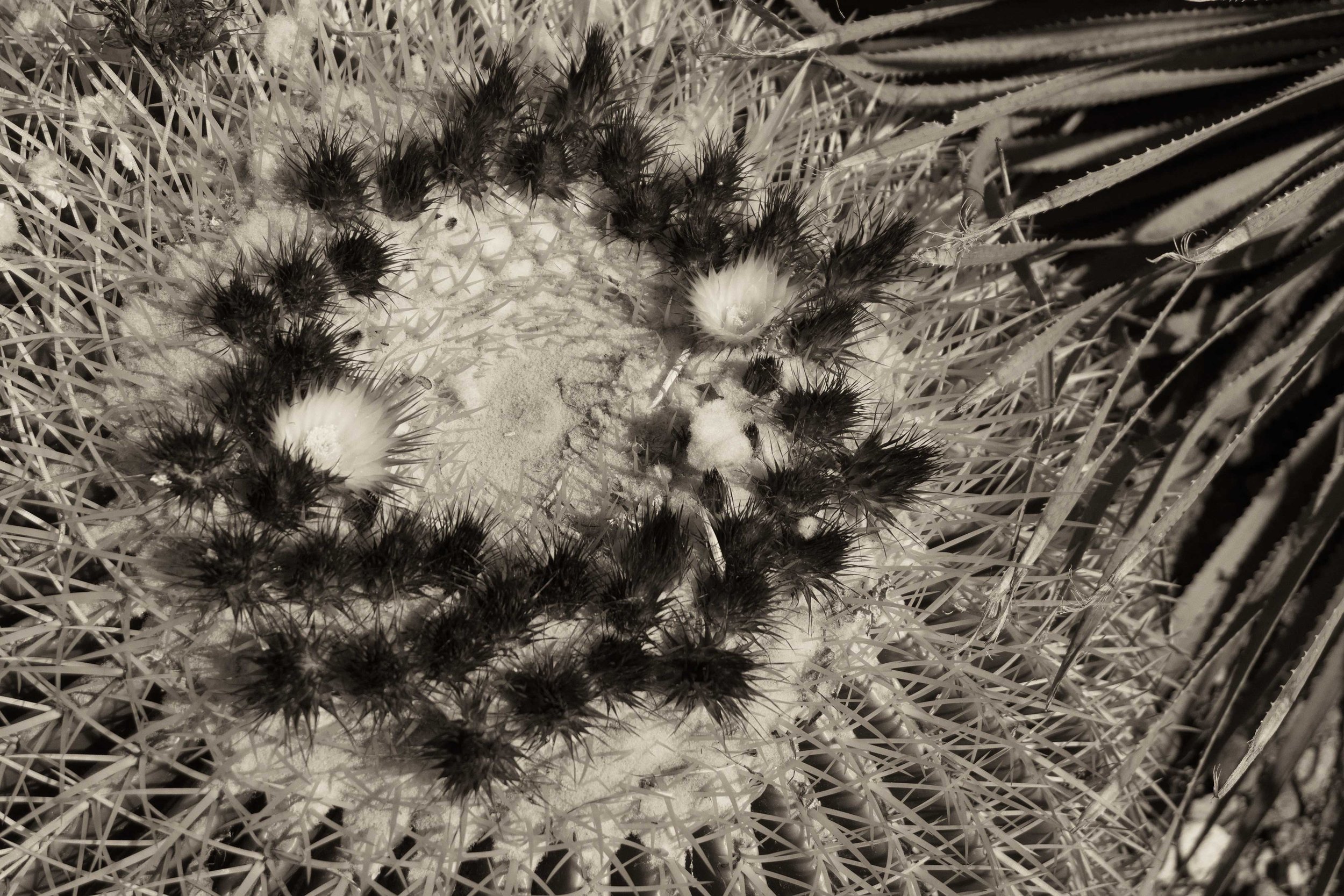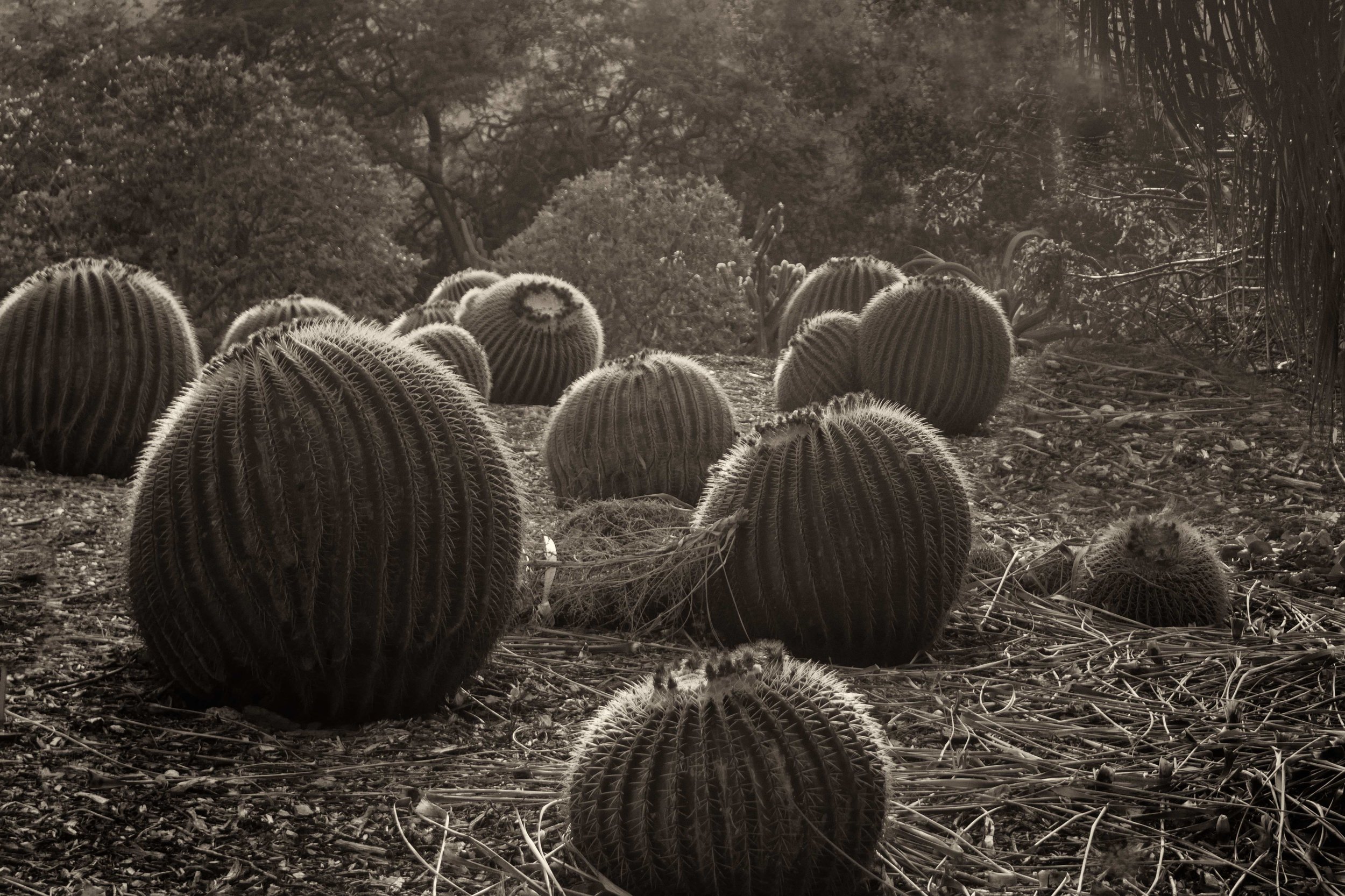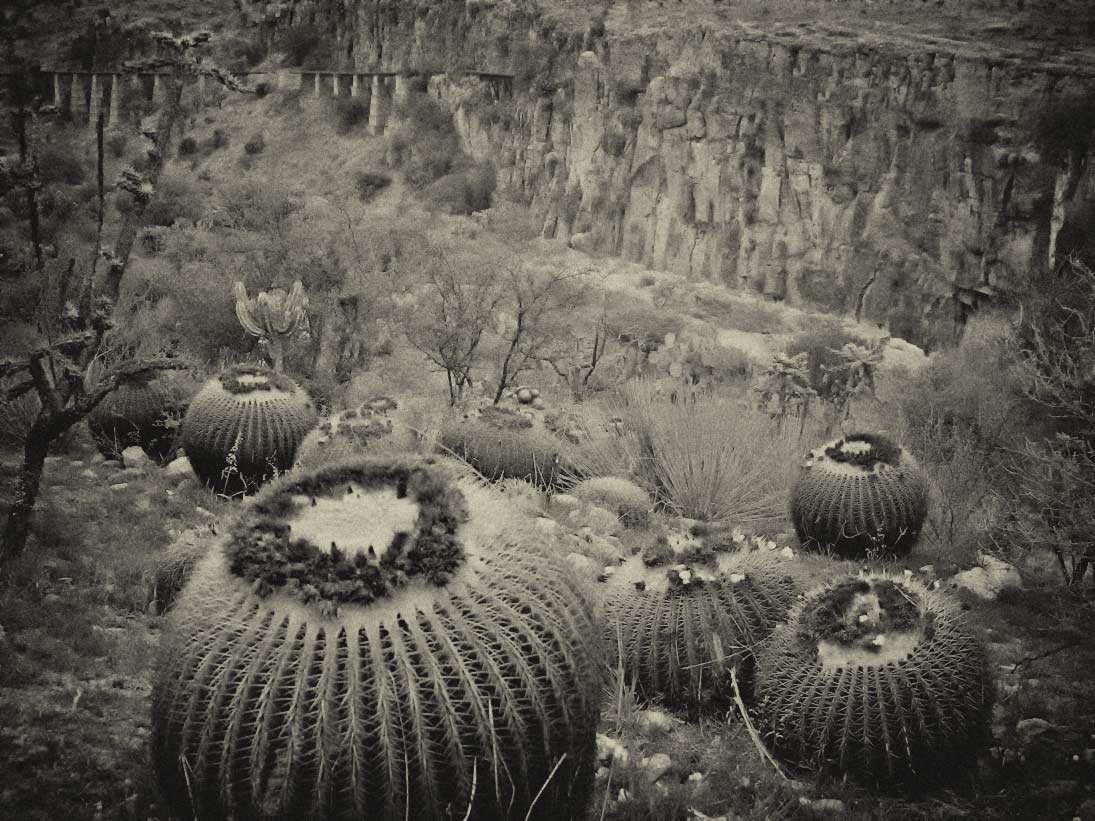Enthralling Cacti and Agaves
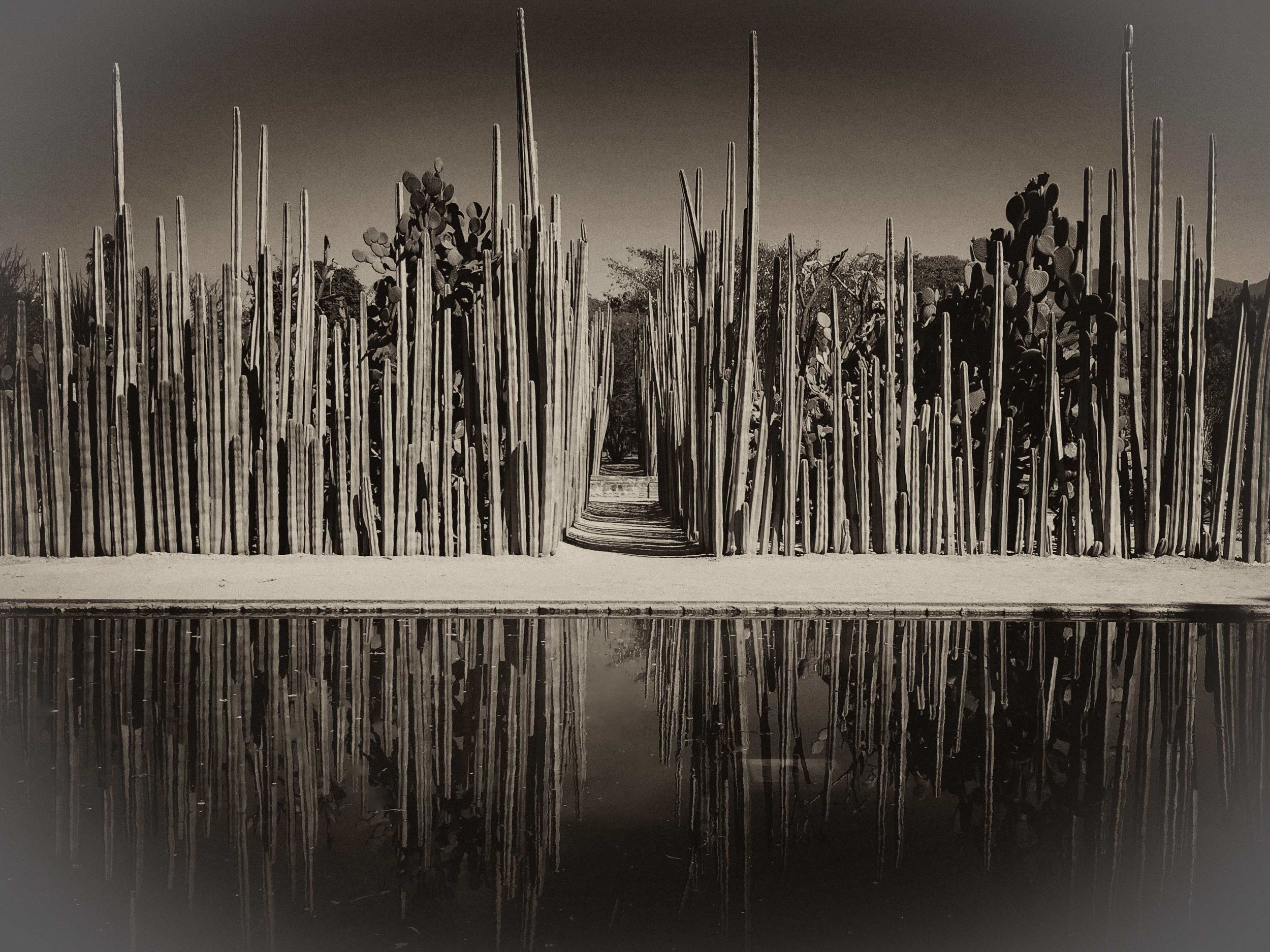
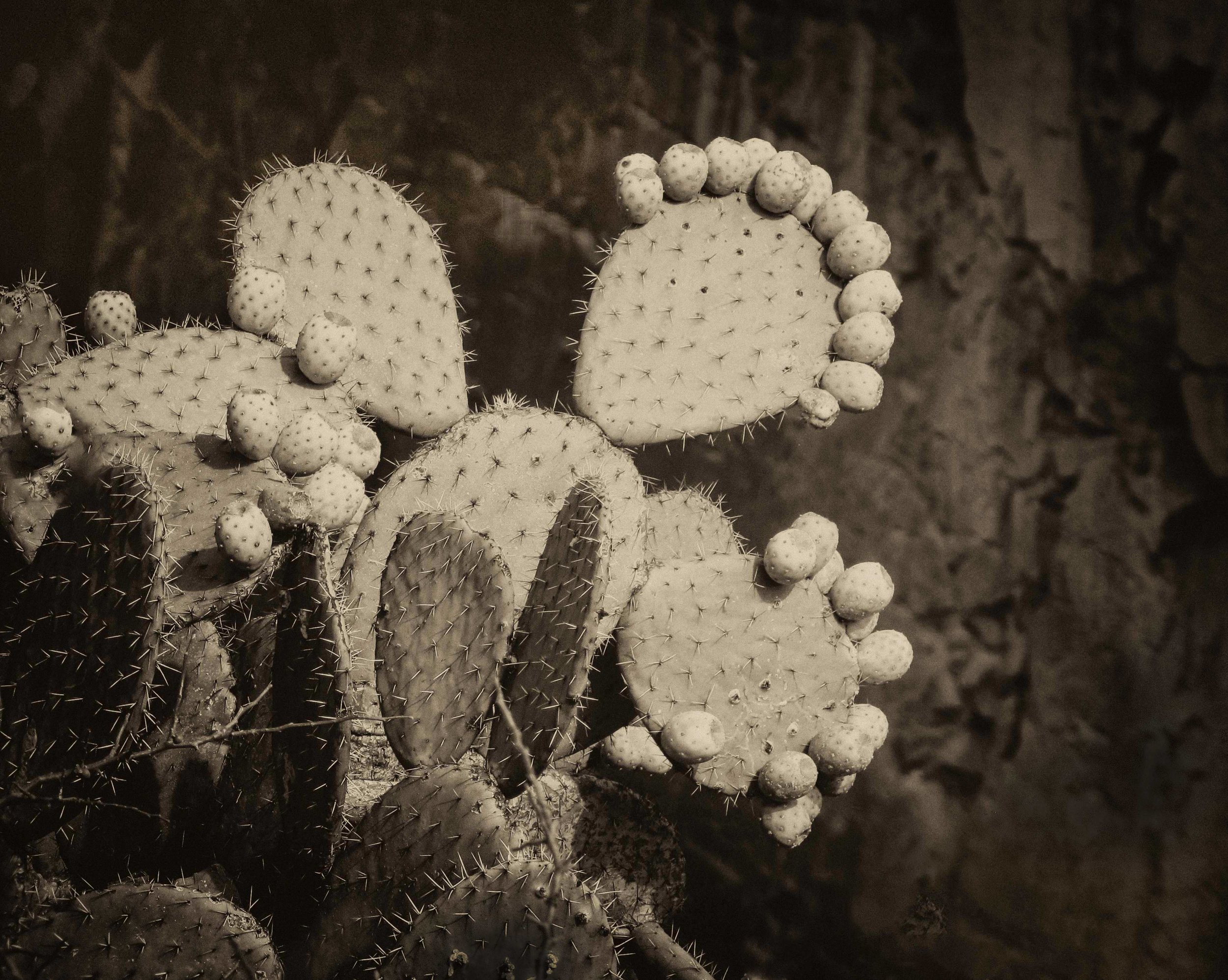
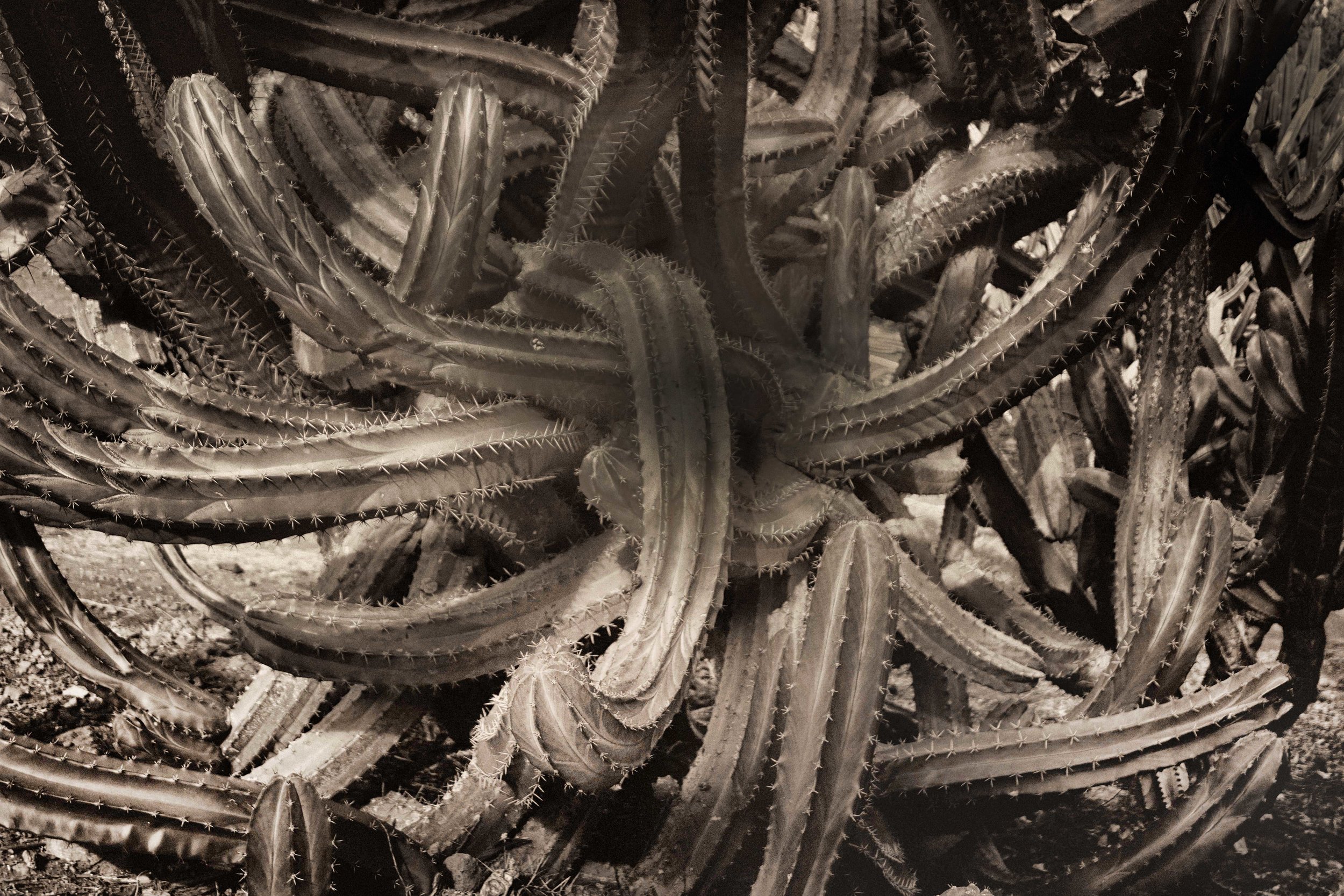
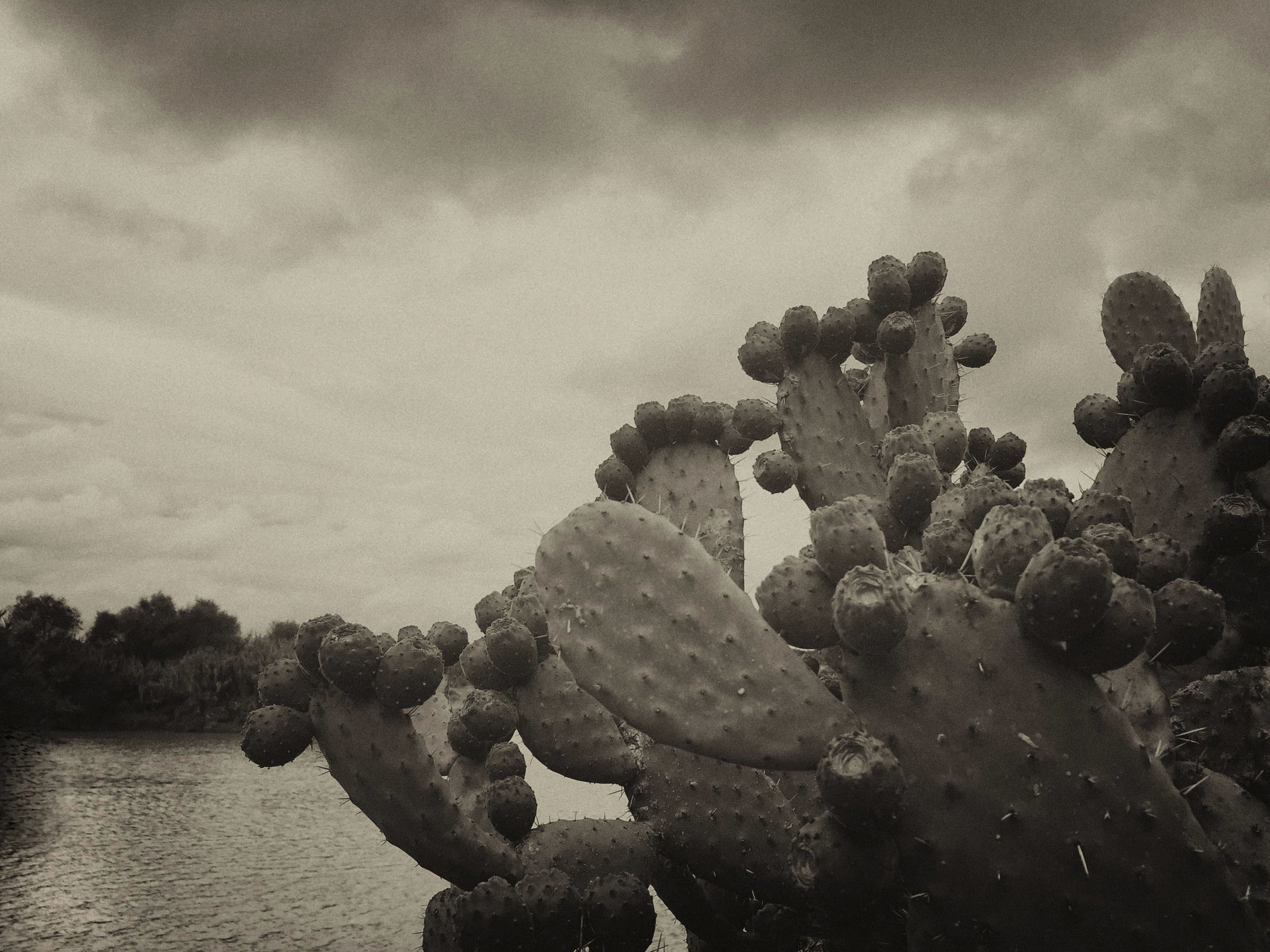
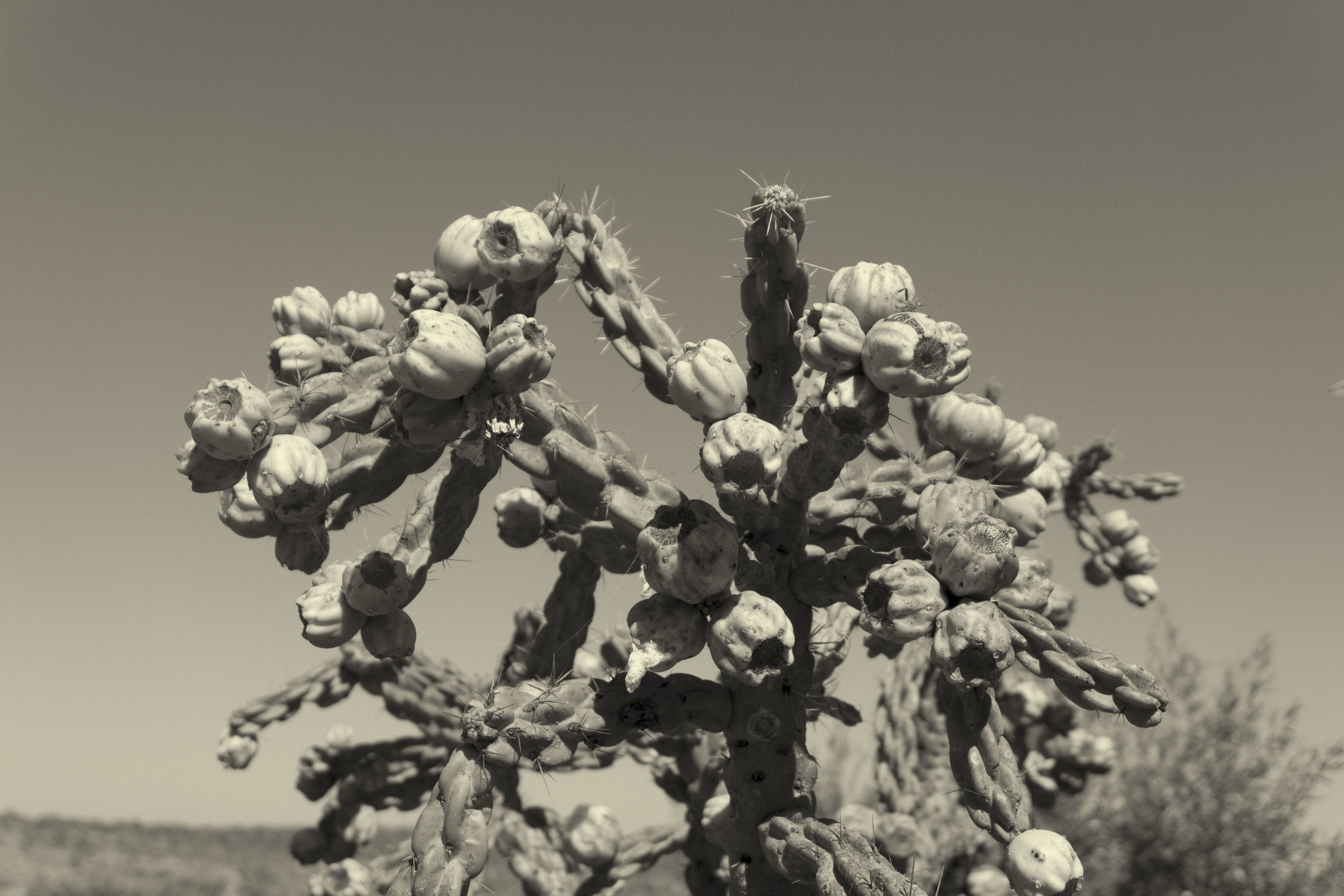
Cacti and agaves, both succulents but of very different plant families, continue to be a source of fascination. Be they round, tubular, columnar, or sinewy, their majestic forms intrigue and inspire. With their quasi-indomitable nature that can withstand scalding sun, drought and the harsh conditions of desert environments, they beg for respect. And indeed those with sharp spines get it. Cowboys invented heavy duty chaps to protect themselves while on horseback from the dangerously protruding and rather unattractive cactus called: Cholla in Mexico or Cardon.
As succulents, their fleshy parts and shallow, wide spreading root system are highly adapted to capturing and storing water. A cactus' spines — or what we may have painfully experienced as thorns, is actually a modified type of leaf that evolved to prevent water loss. With the faint touch of shade they provide they are further protected from "dehydration".
Native to the New World, a vast variety of cactus, agave and yucca species extends from as far north as Canada to southern Patagonia. Out of approximately 1750 species only the "Mistletoe cactus", found in Africa and Sri Lanka, is non-native. Some say that birds may have brought it to the other side of the Atlantic...
Agaves, commonly referred to as Maguey and Century plants, feature smooth, thick, leather-like leaves. Both their sensual texture and sculptural forms make for a visual knockout often sought out by landscape designers. Of course, the mescal and tequila produced by the blue Agave tequilana juice also does the trick... And while I may indulge in an occasional sip of the smoky mescal, I will invariably buy the delicious and ever so nutritious aguamiel (honey water) from an older senora at San Miguel de Allende's mercado. But once it turns into pulque, you better watch out...
Numerous species of cacti also offer highly nutritional and medicinal qualities. For example, much of the Nopal cactus, or "Prickly pear" is edible. With the spines removed, young nopal "pads" are then chopped and boiled, making for a somewhat unctuous dish called "nopalitos". Another edible is the tuna, a coral red fruit which, when ripe in the fall, is sold raw in markets. I've only sampled it after it's been prepared, making for an unusually delicious type of marmalade.
Saguaro cactus, oahu, Hawaii
Having come to know better and appreciate native desert plants at El Charco del Ingenio, a botanical garden in the high desert of Guanajuato, it was quite a surprise to encounter them in Hawaii which one associate more with the lush, rainy tropics. Awaiting us however, on a dryer side of Oahu was an arboretum overflowing with them. Right above is the majestic Saguaro cactus.
Not far from this elegant, solitary specimen awaited a mass of my favorite: the Golden barrel cactus. With their yellow stripes and velvet-like tops they positively glow. When the yellow flowers emerge they are asking to be plucked. Here they looked like strewn and discarded bowling balls.
Biznaga de Zimapan or Golden Barrel Cactus, Oahu, Hawaii
But look more closely to the right and you'll see why you may not wish to pluck the flowers emerging here...
The Mexican word for this cactus is La silla de tu suegra, the "seat of your mother in law." Por supesto, of course.
And now for the agaves. As succulents, they sport a large rosette of thick, fleshy leaves, many tipped by a short, single spine. The one below like a variegated yellow and green hosta back north resembles a tangled up octopus.
Agave, el charco del ingenio, san miguel de allende, mexico
Finally here, is an agave's signature piece: an immense, asparagus-like stalk referred to also as a "mast". Thus upon reaching 10 or 12 years old, this plant will thrust its enormous flowering stem up to 8 meters high producing a large mass of flowers much appreciated by bees, birds and bats. A once in a lifetime bloomer, it will then die, hence the name, Century plant. Thanks to the endurance of its rosette offshoots however, not all is lost.
The giant mast of agave, El Charco del Ingenio, San Miguel de ALlende



